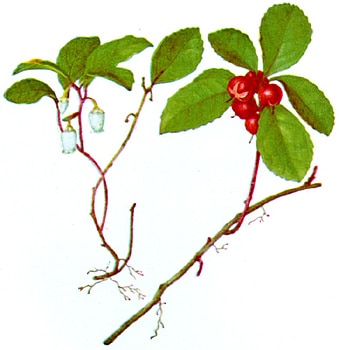The Teaberry Plant | A Native to New England
Teaberry plants are almost everywhere in New England and are usually at their peak in mid-October! If you have ever spent time walking in the woods in New England, chances are you have stumbled across or even walked upon teaberry plants. If you are native to New England, you may even have fond memories of […]

The teaberry plant is also commonly referred to as wintergreen or checkerberry.
Photo Credit : Clipart.com
Photo Credit : Clipart.com
Teaberry Planting and Growing Instructions
- Planting time for the Tea Berry is in the late spring.
- Choose a partially shaded area with well drained, yet rich soil.
- Transfer healthy, newly dug up plants with a generous root system to the shaded area and plant as deep as the roots allow without being stretched. If you are planting from seeds instead -plant the seeds 2-3 inches deep and be sure to leave at least 4 inches of space for growth in between the seeds.
- Keep the soil consistently moist. Expect germination to begin in approximately 6-8 weeks. Once established, the Teaberry will spread on it’s own and require little if any care.
Shelley Wigglesworth
Shelley (Fleming) Wigglesworth is an award-winning freelance journalist from Maine and a certified Maine Master Gardener who writes gardening articles on a regular basis for NewEngland.com. Her work can be found in the following publications: The Village Magazine, York County Coast Star, Yankee Magazine (online), National Fisherman Magazine, Commercial Fisheries News, Points East Magazine, Coastal Angler Magazine and The Maine Lobstermen's Association's "Landings."
More by Shelley Wigglesworth

